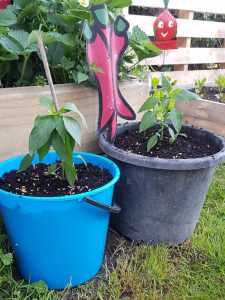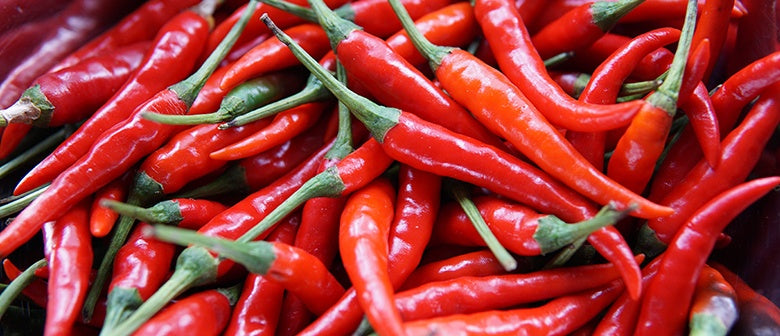Spicy Food Fanatics: Homegrown chillies
It isn’t for everyone but there is a few of us out there, probably more than a few, that absolutely love spicy food. I absolutely cannot get enough of spicy, flavoursome food. I grew up on food that had no spice at all, not even much added flavours such as herbs. I only happened to stumble across spice in my late teens, when going out for dinner with friends became more of something you did. I quickly learnt how precious chillies were to me.
Nowadays I tend to put chilli in many of my dishes and I grow my own chilli plants every year without fail. I’m currently waiting on my seedlings to get a little bit more growth in to them as they are always the last to grow given they really rely on warmth, but I did buy a few cheat seedlings ready to go as well. I will probably end up with about 10 different varieties!
The best thing about chilli is that once the warmer days set in, they are so easy to grow and they give so much. From one plant you can get handfuls of chillies and I always have plenty to put in the freezer for winter or to dry and make instant flavour. They may be slow to start but they will gift like no other plant.
Varieties: Which chilli should you choose? There are so many varieties of chilli, that I can not include them all, but some of the most popular chillies are:
Jalapeno: My favourites! I love making jalapeno poppers. Jalapenos are great in Mexican food such as nachos, in salsas and pickled.
Wildfire: A hot chilli that is a heavy producer.
Cayenne: Long, thin skinned chilli that is a good producer. Great for drying and using to sprinkle in food whilst cooking.
Habanaro: If you like it extremely spicy this one is the one for you. Small but extra hot. Usually the smaller the chilli the hotter.
Tobasco: Heirloom variety with a smokey flavour.
Hungarian yellow: Something a bit more mild and sweet. Use fresh in salads and stir fry.
Anaheim: A mild chilli good for Mexican dishes and garnish.
You should be able to find many varieties of seedlings or seeds in garden centres, but if you want something more instant there is usually a ready to eat range in stores that are just as fun to grow and harvest but you don’t have to wait!
When to plant:
My rule of thumb, as with the likes of frost tender seedlings such as eggplants and tomatoes, is wait for Labour Day weekend. Generally we are pretty safe from frosts after that, but keep an eye on any late frosty night time temperatures. You may have to protect with frost cloth after that. I make little covers with plastic drink bottles. Just chop the bottle in half in half and cover your seedling for the night if you are worried. Just remember to take them off in the morning as the sun may fry them. October to January are the ideal months for planting.
Where to plant:
I guess they have to get the heat from somewhere, so of course they love it in the full sun. If you can provide at least 6 hours a day of sunlight these plants will thrive. Protect from strong winds and frosts if planting early.
Plant in containers:
Chillies are great in containers. I usually grow both in the ground and in containers as it is one of my favourite plants to grow, having success with both. Choose a pot or container that is around the size of a 9L bucket or larger for the plant to thrive. Make sure there are drainage holes in the bottom. Fill with a good quality potting mix and water frequently (every day in summer).
Plant in garden beds:
Prep the soil with goodies such as compost and manures. Chillies are a very hungry plant and will need lots of nutrients. Soil should be loose and free drainage. Adding compost will help if your soil is prone to being water logged. Planting in a raised garden will be beneficial. Space chillies about 40 to 50cm apart if planting more than one.
Tips:
- Stake plants as they grow as they may become heavy with fruit and the stems can be quite brittle.
- Feed with a certified organic liquid fertiliser every two weeks.
- Tomato food is a great option for chillies.
- Water container gardens every day or second day.
- Harvest chillies when green or wait until they are red for a hotter chilli
- Wear gloves when harvesting or wash your hands straight after. Cut the chilli from the branch when harvesting.
- Chillies can be frozen, dried or pickled for winter
- Chilli plants can be overwintered indoors or in a greenhouse but many people prefer to treat them as annuals and pull them out at the end of the season.
Grow chillies in your garden



